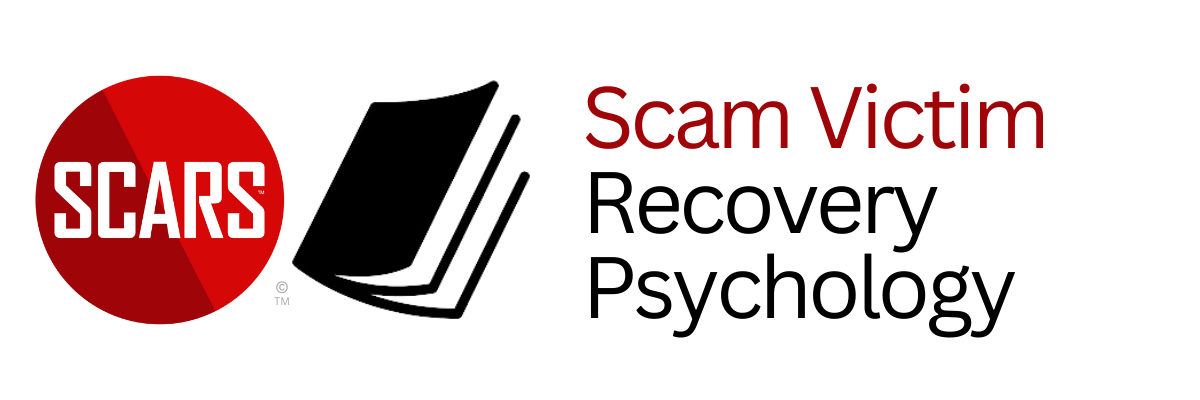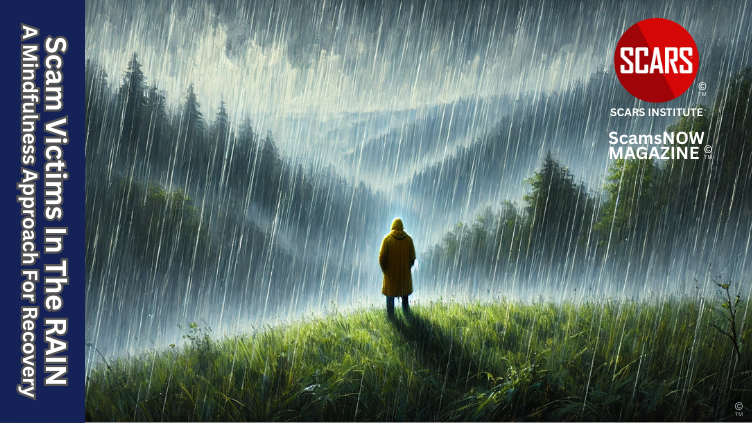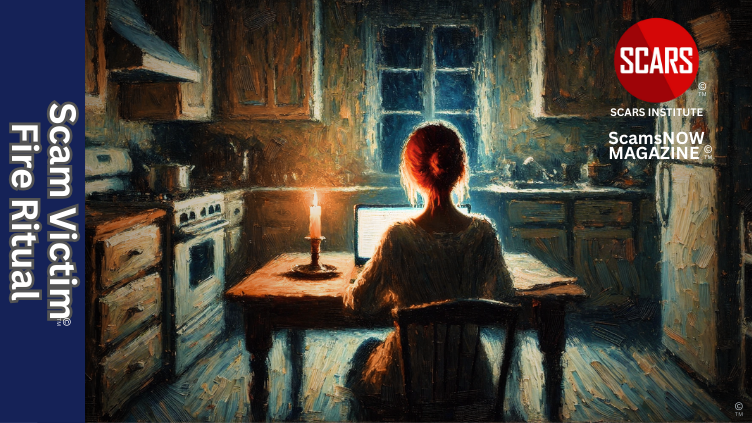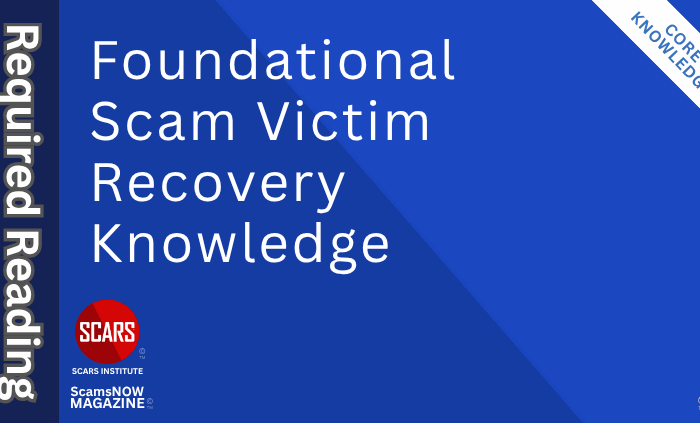Scam Victim Fire Ritual – Exorcizing the Ghosts of the Past
Releasing the Secret Story: A ‘Fire’ Ritual for Scam Victim Recovery Through Voice, Flame, and Reflection
Primary Category: Scam Victim Recovery Psychology
Intended Audience: Scam Victims-Survivors
Author:
• Tim McGuinness, Ph.D., DFin, MCPO, MAnth – Anthropologist, Scientist, Polymath, Director of the Society of Citizens Against Relationship Scams Inc.
About This Article
The fire ritual for scam victim recovery is a private, structured way to tell your full story without fear, interruption, or shame. Using Microsoft Word’s voice-to-text tool, you speak your experience aloud while a candle flame symbolically holds space for your pain. This ritual draws from ancient traditions across cultures that used fire, prayer, and storytelling to release grief and trauma. The act of speaking—not to a person, but to the silence—bypasses the fear of judgment and allows for unfiltered honesty. Lighting the candle marks the beginning.
Speaking your truth releases pressure. Snuffing the flame marks emotional closure. Saving the document lets you witness your growth over time. This is not religious, but it is sacred. It is not about producing a written story. It is about liberating the untold one you carry inside. You did not cause your pain, but this ritual gives you a way to reduce its power and begin to heal with dignity.

Releasing the Secret Story: A ‘Fire’ Ritual for Scam Victim Recovery Through Voice, Flame, and Reflection
Why the Fire Ritual?
There is a unique kind of suffering that accompanies scam trauma. It is not just the loss of money, time, or emotional investment—it is the burden of the untold story. Scam victims often carry the weight of their experience in silence. Even when you do speak, you rarely tell the whole story or the full truth. There are always pieces you hold back, fragments of shame, regret, or grief that you tuck away because you fear judgment, misunderstanding, or disbelief. The result is emotional pressure, stress, tension, even trauma, that builds slowly but steadily, disrupting your peace and delaying your healing. What you need is not just therapy, education, or justice. Sometimes what you need most is a space to tell your full truth without interruption, judgment, or risk. That is where this Fire Ritual comes in.
This Fire Ritual practice is designed to give you a safe, private, and structured way to tell your entire story in your own words, at your own pace.
It uses tools that are simple but effective: Microsoft Word’s free online voice-to-text feature (see below for instructions), a candle flame, and the structure of fire ritual.
You do not need to perform it for anyone else. It is a moment for you, by you, and entirely about releasing what has remained trapped inside.
This process is not about editing, publishing, or even organizing your thoughts. It is about unburdening.
It is about reclaiming your voice and symbolically reducing the emotional power that the scam still holds over you.
Why Storytelling Matters in Recovery
Scam trauma is often silent trauma. After the scam ends, most victims do not tell the whole truth to anyone. You may tell your friends it was a misunderstanding. You may share parts of the story in support groups. But the full version—the version with the most painful admissions, the rawest emotions, and the smallest humiliations—often remains locked inside.
This secrecy creates internal stress. Your brain is holding two versions of yourself: the one who lived through the scam, and the one you allow the world to see. The longer this duality continues, the more pressure it places on your emotional wellbeing. You feel misunderstood, fragmented, and isolated.
Telling your story out loud, in a safe and judgment-free space, helps reconcile those parts. It brings coherence to your experience. It allows you to connect memory with meaning. It releases trapped emotions that have lingered in silence. And it helps you begin to reframe the narrative—not as a story of failure, but as a story of survival and growth.
Creating the Space for Your Fire Ritual
This ritual can be performed using any device that allows access to Microsoft Word’s online voice-to-text tool (see below). A laptop is ideal for comfort and convenience, but a mobile device can work as well. The purpose is to allow you to speak freely while Microsoft Word transcribes your words into written text. This is not a substitute for conversation or counseling. It is a form of self-confession—a controlled space where you speak not to another person, but into the silence, allowing your story to take form.
To begin, choose a quiet place where you will not be interrupted or overheard. This might be your bedroom, a study, your backyard, or any space that feels personal and protected. Silence your phone. Close unnecessary tabs or windows. Prepare your environment to reflect that what you are doing is intentional. This is not casual journaling. It is ritualized expression.
You are now ready to open the Microsoft Word online document. Activate the voice-to-text feature. Do this before proceeding to maintain continuity. See below for instructions.
Step One: Light the Candle
Make sure the candle will last as long as you need it to. Do not light the candle until you are completely ready.
The fire ritual begins with the lighting of a small candle. This act serves two purposes. First, it creates a sensory shift that marks the beginning of the experience. Second, it provides a symbolic focus. The flame represents your story. It is the container for everything you are about to release. It is not a candle of mourning. It is a candle of purification.
Choose a simple candle—nothing fancy or expensive. Place it near you in a safe holder. Light the candle slowly and deliberately. As the flame rises, take a breath and recognize that this moment is different from every other conversation or attempt you have made to tell your story. This is not about being understood by others. It is about being honest with yourself.
Step Two: Say a Short Prayer or Invocation
Before you begin, say a quiet prayer or invocation. This can be addressed to any deity, spiritual force, or philosophical principle that brings you comfort. It does not need to be long or formal.
You might simply say: “Let this story be heard by the silence. Let what was hidden be spoken. Let what was heavy begin to lift.”
The purpose of this moment is not religious in a traditional sense. It is spiritual in the way confession is spiritual. You did not commit a sin, but you suffered something deeply personal. This moment of prayer or invocation serves to mark that what you are about to say has meaning. It deserves reverence.
However, if you are Catholic, you might recite the Psalm 51 prayer to begin.
Step Three: Begin Telling Your Story
Take a deep breath. Then begin to speak.
- Say whatever needs to be said.
- Do not worry about making sense.
- Do not worry about telling your story in the right order.
- This is not a report.
- This is not a performance.
- This is your opportunity to speak freely, without judgment or interruption.
- Talk about how the relationship began.
- Talk about what you believed.
- Talk about what you ignored.
- Talk about what you lost.
- Talk about what it felt like to discover the truth.
- Talk about the dreams that were stolen, the lies that hurt the most, and the ways you blamed yourself.
If you cry, keep talking. If you need to pause, pause. If you repeat yourself, let it happen. This is not about efficiency. This is about honesty. This is about releasing pressure, guilt, shame, anger, sadness, and fear through the act of speaking. No one is listening. That is the point. You are free to say it all.
Continue speaking until you feel emotionally complete. You will know when that moment arrives. Something will settle. Your voice may go quiet. Your thoughts may slow. You will feel the shift.
Step Four: Say a Prayer of Gratitude
Once you have finished telling your story, pause. Allow silence to return to the space. Then say a simple prayer of gratitude.
It may be as simple as: “Thank you for the strength to speak. Thank you for the space to feel. Thank you for letting the truth be told.”
This moment is about closure. It does not erase the pain. It does not fix everything. But it acknowledges that something important has happened. You were silent. Now you have spoken. The truth is no longer hidden in your mind. It has been given form. And that form belongs to you.
Step Five: Extinguish the Candle
Finally, extinguish the candle. Do this slowly and with intention. The flame has served its purpose. It held the space for your story. It now releases that story from your body and mind. As the flame dies, imagine that the power the story held over you is also reduced. It is not gone entirely. But it is lessened.
If you prefer, you can perform this ritual outdoors using a fire pit or barbecue. You may even choose to print the transcription and burn the physical copy, although this is not necessary. The power is in the telling, not in the destruction of the text.
The Value of Saving Your Story
Although this ritual emphasizes emotional release, there is value in saving the file you created.
One year from now, you may look back and see how far you have come. You may see the parts of yourself that were hurting and realize how much you have grown. The story, when revisited, becomes a document of survival. It is no longer just about what happened. It is about how you responded, how you recovered, and how you rebuilt your life.
Saving the document does not mean you need to read it immediately. You may never want to read it. That is acceptable. But saving it affirms that your experience mattered. It was real. It was worth telling. It was worth preserving.
Repeating the Fire Ritual
You may find that telling your story once is not enough. That is normal. This fire ritual can be repeated as often as needed. Each version of the story may be slightly different. That is also normal. Healing is not linear. Some days, new pieces of the story come forward. Some days, old emotions resurface. When that happens, return to the fire ritual. Light the candle. Speak the truth. Release the pressure.
You may also adapt this ritual as your recovery evolves. You might include music, symbols, or written affirmations. You might use it as a monthly practice to reflect on progress. There are no rigid rules. The only requirement is that it remains a private, truthful, and emotionally honest experience.
Note: It does not matter how long ago the crime ended. This fire ritual can help at any time when you need to exorcise that demon!
Where Did This Come From?
This was developed by a Anthrologist specifically for scam victims. However, this is a modern adaptation of very old, deeply human practices.
Here are a few cultural parallels:
Catholic Confession (Western Christianity)
The ritual structure closely mirrors the Catholic sacrament of confession, where the individual privately recounts their actions and emotional burdens to a priest. The goal is not punishment but spiritual relief. Even though scam victims have done nothing wrong, the act of telling still brings relief from guilt and shame. Your ritual replaces the priest with a nonjudgmental interface—Microsoft Word.
Japanese Kuyo Ritual
In Japanese Buddhist traditions, there are kuyō ceremonies for the release of emotional or spiritual attachment. People sometimes hold rituals for broken objects, pets, or painful memories. The intention is to give form to grief or guilt and allow it to be released. Your ritual is similar in that it gives symbolic closure to the scam experience.
Indigenous Storytelling and Fire Ceremonies
Many Indigenous cultures from the Americas, to Australia, to Pacific Cultures, use storytelling as a form of personal healing and communal reconnection. Combined with fire ceremonies—where items are symbolically burned—these rituals help process grief, trauma, and personal transformation. Your candle, as a symbolic flame of release, reflects that tradition on a smaller, personal scale.
African Diaspora Spiritual Practices
In some Afro-Caribbean and African diasporic spiritual systems (such as Yoruba, Santería, and Vodou), rituals involving spoken confession, offering, fire, and prayer are used to cleanse emotional wounds, remove spiritual blockages, or symbolically “send away” pain. The structure of your ritual echoes this process—without requiring a priest or formal altar.
Secular Therapeutic Writing and Narrative Therapy
In contemporary Western psychology, narrative therapy encourages people to externalize their trauma by telling their story out loud or writing it down. It reframes suffering as a chapter, not an identity. Your ritual closely aligns with this therapeutic model, but transforms it into a symbolic and emotionally resonant experience through candle lighting and ritual form.
Conclusion
This first ritual offers a structured, private way for scam victims to speak their full truth and begin releasing the emotional pressure that silence creates. By using Microsoft Word’s voice-to-text feature, you bypass the fear of judgment, allowing your story to come out freely, without fear, shame, or interruption. The candle serves as a symbolic flame that holds and then helps destroy the emotional power the story has had over you. The act of speaking is not just therapeutic. It is liberating. You are no longer holding the story inside. You are letting it breathe.
Telling your story in this way is not a substitute for connection or professional help. But it is a powerful step toward reclaiming your voice and restoring your emotional balance. It acknowledges that your experience matters, that your pain deserves space, and that healing often begins with the simple but courageous act of speaking out loud. You did not deserve what happened to you. But you do deserve the peace that comes from naming it. And this ritual is one way to begin finding that peace, on your terms, in your own voice.
Reference
Using Microsoft 365 Word Online:
Link: Free Productivity Apps for Personal and Work | Microsoft 365
To use the speech-to-text feature in Microsoft Word (Office 365), open Word Online, then a Word document, go to the Home tab, and click on the “Dictate” button. This will activate a dictation toolbar where you can start speaking to have your words transcribed.
Detailed Steps:
- Open Word and a Document: Open Microsoft Word and either create a new document or open an existing one.
- Go to the Home Tab: Click on the “Home” tab in the Word ribbon.
- Find and Click “Dictate”: Locate the “Dictate” button (it looks like a microphone) and click on it.
- Start Speaking: The dictation feature will activate, and you can start speaking into your microphone to have the words transcribed into your document.
- Stop Dictation: Click the “Dictate” button again to stop the dictation.
- Review: After you’re finished dictating, review the text in your document as needed.
Note that these steps may change as Word changes.
-/ 30 /-
What do you think about this?
Please share your thoughts in a comment below!
Important Information for New Scam Victims
- Please visit www.ScamVictimsSupport.org – a SCARS Website for New Scam Victims & Sextortion Victims.
- SCARS Institute now offers its free, safe, and private Scam Survivor’s Support Community at www.SCARScommunity.org – this is not on a social media platform, it is our own safe & secure platform created by the SCARS Institute especially for scam victims & survivors.
- SCARS Institute now offers a free recovery learning program at www.SCARSeducation.org.
- Please visit www.ScamPsychology.org – to more fully understand the psychological concepts involved in scams and scam victim recovery.
If you are looking for local trauma counselors, please visit counseling.AgainstScams.org
If you need to speak with someone now, you can dial 988 or find phone numbers for crisis hotlines all around the world here: www.opencounseling.com/suicide-hotlines
Statement About Victim Blaming
Some of our articles discuss various aspects of victims. This is both about better understanding victims (the science of victimology) and their behaviors and psychology. This helps us to educate victims/survivors about why these crimes happened and not to blame themselves, better develop recovery programs, and help victims avoid scams in the future. At times, this may sound like blaming the victim, but it does not blame scam victims; we are simply explaining the hows and whys of the experience victims have.
These articles, about the Psychology of Scams or Victim Psychology – meaning that all humans have psychological or cognitive characteristics in common that can either be exploited or work against us – help us all to understand the unique challenges victims face before, during, and after scams, fraud, or cybercrimes. These sometimes talk about some of the vulnerabilities the scammers exploit. Victims rarely have control of them or are even aware of them, until something like a scam happens, and then they can learn how their mind works and how to overcome these mechanisms.
Articles like these help victims and others understand these processes and how to help prevent them from being exploited again or to help them recover more easily by understanding their post-scam behaviors. Learn more about the Psychology of Scams at www.ScamPsychology.org
SCARS INSTITUTE RESOURCES:
If You Have Been Victimized By A Scam Or Cybercrime
♦ If you are a victim of scams, go to www.ScamVictimsSupport.org for real knowledge and help
♦ SCARS Institute now offers its free, safe, and private Scam Survivor’s Support Community at www.SCARScommunity.org/register – this is not on a social media platform, it is our own safe & secure platform created by the SCARS Institute especially for scam victims & survivors.
♦ Enroll in SCARS Scam Survivor’s School now at www.SCARSeducation.org
♦ To report criminals, visit https://reporting.AgainstScams.org – we will NEVER give your data to money recovery companies like some do!
♦ Follow us and find our podcasts, webinars, and helpful videos on YouTube: https://www.youtube.com/@RomancescamsNowcom
♦ Learn about the Psychology of Scams at www.ScamPsychology.org
♦ Dig deeper into the reality of scams, fraud, and cybercrime at www.ScamsNOW.com and www.RomanceScamsNOW.com
♦ Scam Survivor’s Stories: www.ScamSurvivorStories.org
♦ For Scam Victim Advocates visit www.ScamVictimsAdvocates.org
♦ See more scammer photos on www.ScammerPhotos.com
You can also find the SCARS Institute’s knowledge and information on Facebook, Instagram, X, LinkedIn, and TruthSocial
Psychology Disclaimer:
All articles about psychology and the human brain on this website are for information & education only
The information provided in this and other SCARS articles are intended for educational and self-help purposes only and should not be construed as a substitute for professional therapy or counseling.
Note about Mindfulness: Mindfulness practices have the potential to create psychological distress for some individuals. Please consult a mental health professional or experienced meditation instructor for guidance should you encounter difficulties.
While any self-help techniques outlined herein may be beneficial for scam victims seeking to recover from their experience and move towards recovery, it is important to consult with a qualified mental health professional before initiating any course of action. Each individual’s experience and needs are unique, and what works for one person may not be suitable for another.
Additionally, any approach may not be appropriate for individuals with certain pre-existing mental health conditions or trauma histories. It is advisable to seek guidance from a licensed therapist or counselor who can provide personalized support, guidance, and treatment tailored to your specific needs.
If you are experiencing significant distress or emotional difficulties related to a scam or other traumatic event, please consult your doctor or mental health provider for appropriate care and support.
Also read our SCARS Institute Statement about Professional Care for Scam Victims – click here
If you are in crisis, feeling desperate, or in despair, please call 988 or your local crisis hotline – international numbers here.
More ScamsNOW.com Articles
A Question of Trust
At the SCARS Institute, we invite you to do your own research on the topics we speak about and publish. Our team investigates the subject being discussed, especially when it comes to understanding the scam victims-survivors’ experience. You can do Google searches, but in many cases, you will have to wade through scientific papers and studies. However, remember that biases and perspectives matter and influence the outcome. Regardless, we encourage you to explore these topics as thoroughly as you can for your own awareness.















![NavyLogo@4x-81[1] Scam Victim Fire Ritual - Exorcizing the Ghosts of the Past - 2025](https://scamsnow.com/wp-content/uploads/2025/04/NavyLogo@4x-811.png)









![scars-institute[1] Scam Victim Fire Ritual - Exorcizing the Ghosts of the Past - 2025](https://scamsnow.com/wp-content/uploads/2025/04/scars-institute1.png)
![niprc1.png1_-150×1501-1[1] Scam Victim Fire Ritual - Exorcizing the Ghosts of the Past - 2025](https://scamsnow.com/wp-content/uploads/2025/04/niprc1.png1_-150x1501-11.webp)
